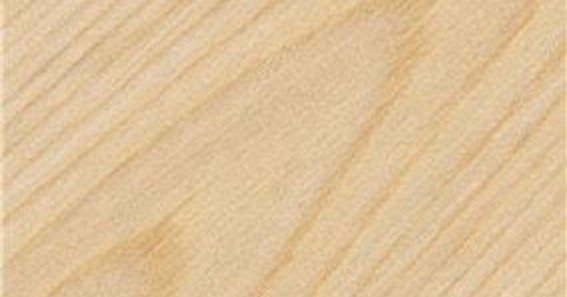When choosing wood for furniture or home projects, oak often comes to mind as a durable and attractive option. However, solid oak can be expensive, leading many to explore alternatives like oak veneer. A common question arises: is oak veneer cheaper than oak, and if so, is it a suitable replacement? In this article, we’ll break down the differences between oak veneer and solid oak, focusing on cost, quality, and the best applications for each.
What Is Oak Veneer?
Oak veneer is a thin slice of oak wood that is typically applied to the surface of a less expensive material, such as MDF (Medium Density Fiberboard) or plywood. The veneer gives the appearance of solid oak but at a lower cost due to the cheaper core material used underneath. For premium oak veneer options, visit www.woodenave.com to explore a wide selection.
What Is Solid Oak?
Solid oak, as the name suggests, refers to furniture or woodwork made entirely from oak. It’s renowned for its strength, longevity, and rich, natural grain, making it a popular choice for high-end furniture and cabinetry.
Cost Comparison: Oak Veneer vs. Solid Oak
One of the primary reasons oak veneer is cheaper than solid oak lies in the materials used. Oak veneer consists of a thin layer of oak applied to an inexpensive substrate like MDF or plywood. Since less oak wood is required, the overall cost of the material is significantly lower.
In contrast, solid oak is a more premium product due to the sheer volume of oak used. The entire piece of furniture or panel is made from oak, which drives up the price substantially.
Here’s a breakdown of the factors affecting the cost:
1. Material Usage
- Oak Veneer: Only a small amount of oak is used in the form of a thin veneer layer. The core is made from cheaper materials, which reduces costs.
- Solid Oak: Requires a substantial amount of oak for the entire structure, leading to higher material costs.
2. Manufacturing Process
- Oak Veneer: The production process involves bonding the oak veneer onto the core material, which is relatively inexpensive compared to carving or milling solid oak.
- Solid Oak: Producing solid oak furniture or panels requires more intensive labor and craftsmanship, driving up both production costs and retail prices.
3. Sustainability
- Oak Veneer: Veneers make better use of natural resources since a single oak log can create many veneer panels, making it a more eco-friendly and budget-conscious option.
- Solid Oak: While durable, the use of large amounts of oak in solid wood products means fewer trees are used efficiently, adding to the environmental and financial cost.
Durability and Longevity
When comparing durability, solid oak is the clear winner. Its density and solid construction make it ideal for long-lasting furniture and heavy-use items. However, oak veneer, when applied to a high-quality substrate like MDF, can still offer good durability at a fraction of the cost. Here’s a closer look:
1. Solid Oak
- Durability: Solid oak is known for its strength, resistance to wear, and ability to withstand decades of use. It can be sanded down and refinished multiple times, making it a long-term investment.
- Longevity: With proper care, solid oak furniture can last for generations, which makes the higher initial cost worthwhile for many buyers.
2. Oak Veneer
- Durability: Oak veneer is generally durable, but the longevity largely depends on the quality of the substrate. If applied to MDF or plywood, it may be more prone to damage from moisture, warping, or dents compared to solid oak.
- Longevity: Veneered pieces cannot be sanded or refinished in the same way as solid oak, limiting their lifespan if they are damaged. However, with proper care, veneered furniture can last many years in lower-traffic areas or less demanding environments.
Appearance and Aesthetic Appeal
Both oak veneer and solid oak offer the same visual appeal initially, but there are some differences to consider:
1. Oak Veneer
- Since oak veneer is a thin slice of natural oak, it retains the same beautiful grain patterns and coloring as solid oak. However, some people may notice a difference in feel and warmth, as veneered pieces can sometimes appear more uniform and lack the rustic charm of solid wood.
2. Solid Oak
- The grain and texture of solid oak are naturally varied and unique, offering an authentic and luxurious look. Additionally, solid oak tends to develop a patina over time, which enhances its aesthetic appeal and value.
Best Applications for Oak Veneer and Solid Oak
The choice between oak veneer and solid oak often depends on the intended use of the material:
1. Oak Veneer
- Best for: Projects where cost is a concern, such as office furniture, built-in cabinetry, or decorative wall panels.
- Advantages: Ideal for low-to-medium traffic areas and budget-conscious homeowners who want the look of oak without the high price tag.
- Limitations: Not suitable for high-moisture environments (like bathrooms) or high-traffic areas where damage may occur.
2. Solid Oak
- Best for: High-traffic areas, heavy-use furniture, or heirloom-quality pieces like dining tables, bookshelves, and cabinets.
- Advantages: Extremely durable, long-lasting, and a solid investment for those willing to pay for premium materials.
- Limitations: Higher upfront cost and heavier weight, which may limit its use in certain applications.
Conclusion
Yes, oak veneer is significantly cheaper than solid oak due to the reduced amount of oak used and the cost savings from using a substrate like MDF. However, the decision to choose oak veneer over solid oak should depend on your specific needs. If you’re looking for durability and longevity in high-use furniture, solid oak is the better choice despite the higher cost. On the other hand, if you’re working within a budget or need materials for lower-traffic areas, oak veneer can provide a cost-effective and visually appealing alternative.
Ultimately, both oak veneer and solid oak have their place, and the best choice will depend on factors like cost, durability, and the purpose of your project.










